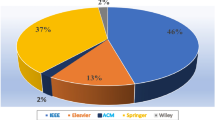Abstract
This paper presents performance comparison among five strategies for mobile support. The major facilities, that are required for a network protocol to support mobile hosts are location management and packet forwarding. Based on this observation, we consider five basic strategies which use distinct methods to achieve these facilities and compare their performance. These five strategies are Broadcast Notification (BN), Broadcast Forwarding (BF), Broadcast Query (BQ), Default Forwarding (DF), and Default Query (DQ). As a result of analytical evaluation and comparison, it is shown that under different network conditions, such as number of routers, network topology, migration/communication ratio, data/control packet size ratio, different strategies produce minimum network traffic. In short, DF and DQ show the best performance in network size scaling, while BF and BQ are efficient for frequent migration. On the other hand, BN is suitable for a small network which has hosts with infrequent migration.
Similar content being viewed by others
References
K.G. Carlberg, A routing architecture that supports mobile end systems,Proc IEEE MILCOM (1992) pp. 159–164.
J.J. Hahn and D.M. Stolle, Packet radio network routing algorithms: a survey, IEEE Commun. Mag. 22 (1984) 41–47.
T. Imielinski and B.R. Badrinath, Querying in highly mobile distributed environments,Proc. 18th VLDB Conf. (1992) pp. 41–51.
J. Ioannidis, D. Duchamp and G.Q. Maguire Jr., IP-based protocols for mobile internetworking,Proc. ACM SIGCOMM 91 (1991) pp. 235–245.
ISO, 10589 Information technology-telecommunications and information exchange between systems-intermediate system to intermediate system intra-domain routeing information exchange protocol for use in conjuction with the protocol for providing the connectionless-mode network service (ISO 8473) (1992).
R. Jain and Y.B. Lin, An auxiliary user location strategy employing forwarding pointers to reduce network impacts of pcs, Wireless Networks 1 (1995) 197–210.
A. Myles and D. Skellern, Comparison of mobile host protocols for IP, Internetworking: Res. and Exp. 4 (1993) 175–194.
C.E. Perkins, IP mobility support, Internet Draft,draft-ietf-mobileip-protocol-11.txt (1995), Working Draft.
C.E. Perkins and P. Bhagwat, A mobile networking system based on internet protocol, IEEE Personal Commun. 1 (1994) 32–41.
C. Rose, Minimization of paging and registration costs through registration deadlines,Proc. IEEE Int. Conf on Communications (1995) pp. 735–739.
R. Tanaka and M. Tsukamoto, A CLNP-based protocol for mobile end systems within an area,Proc. IEEE Int. Conf. on Network Protocols (1993) pp. 64–71.
F. Teraoka, Y. Yokote and M. Tokoro, A network architecture providing host migration transparency.Proc. ACM SIGCOMM 91 (1991) pp. 209–220.
Author information
Authors and Affiliations
Rights and permissions
About this article
Cite this article
Kadobayashi, R., Tsukamoto, M. Traffic-based performance comparison of mobile support strategies. Mobile Netw Appl 1, 57–65 (1996). https://doi.org/10.1007/BF01342732
Issue Date:
DOI: https://doi.org/10.1007/BF01342732




